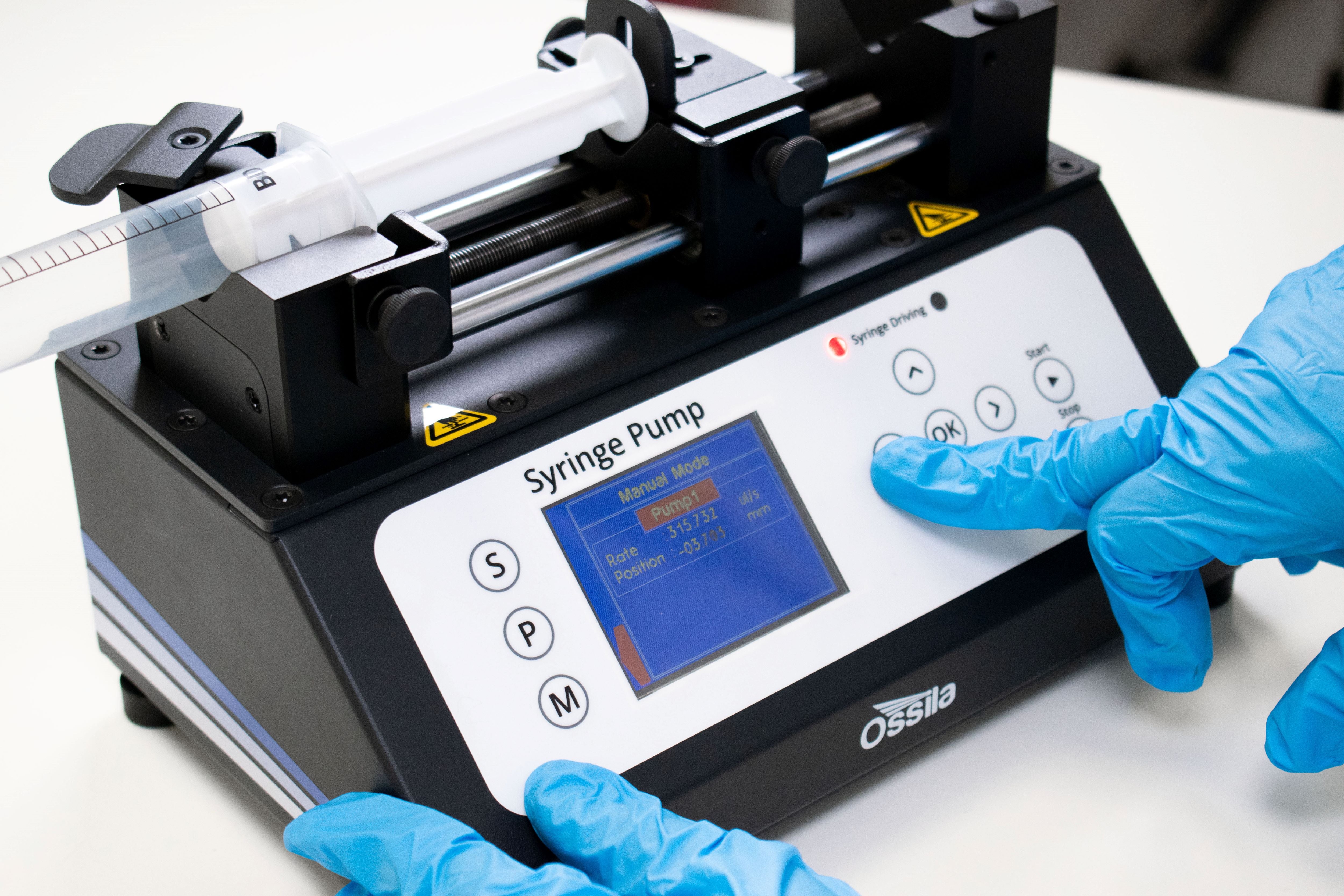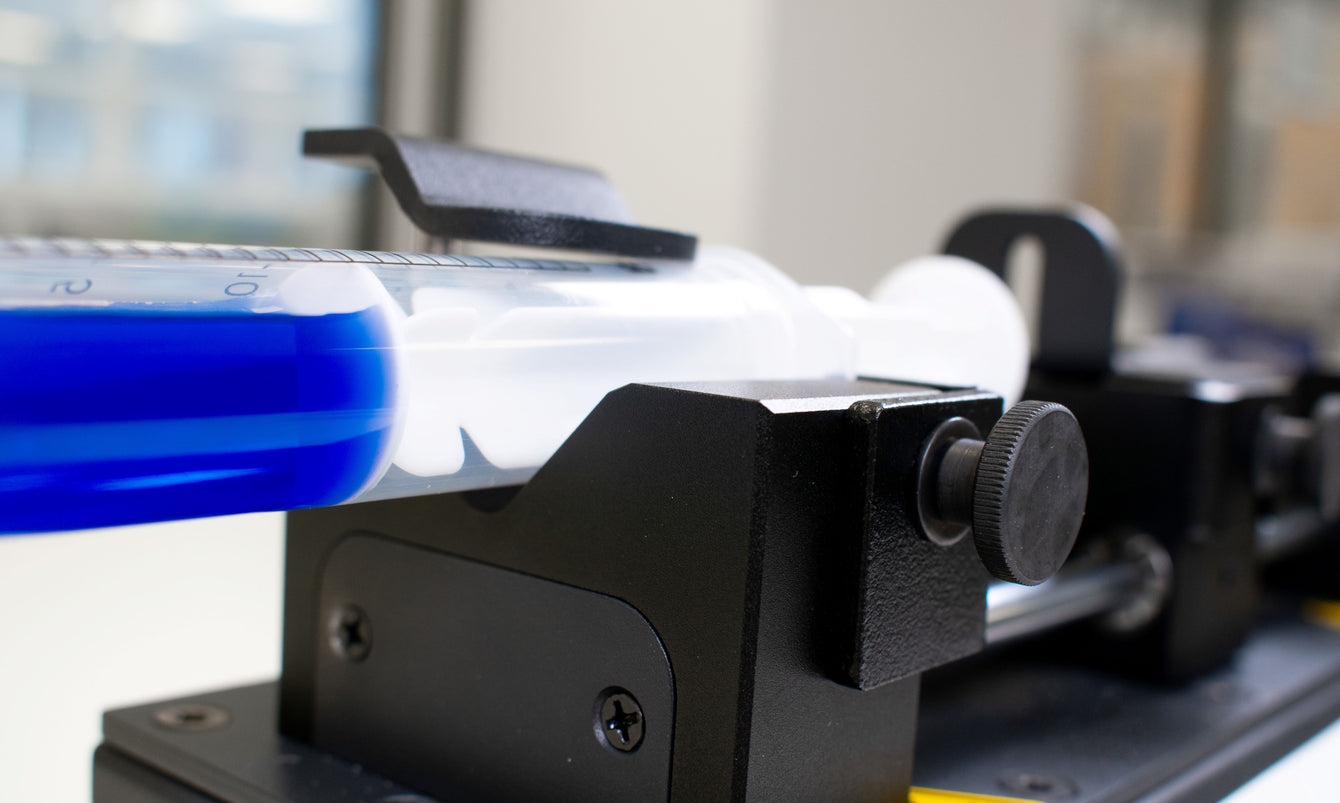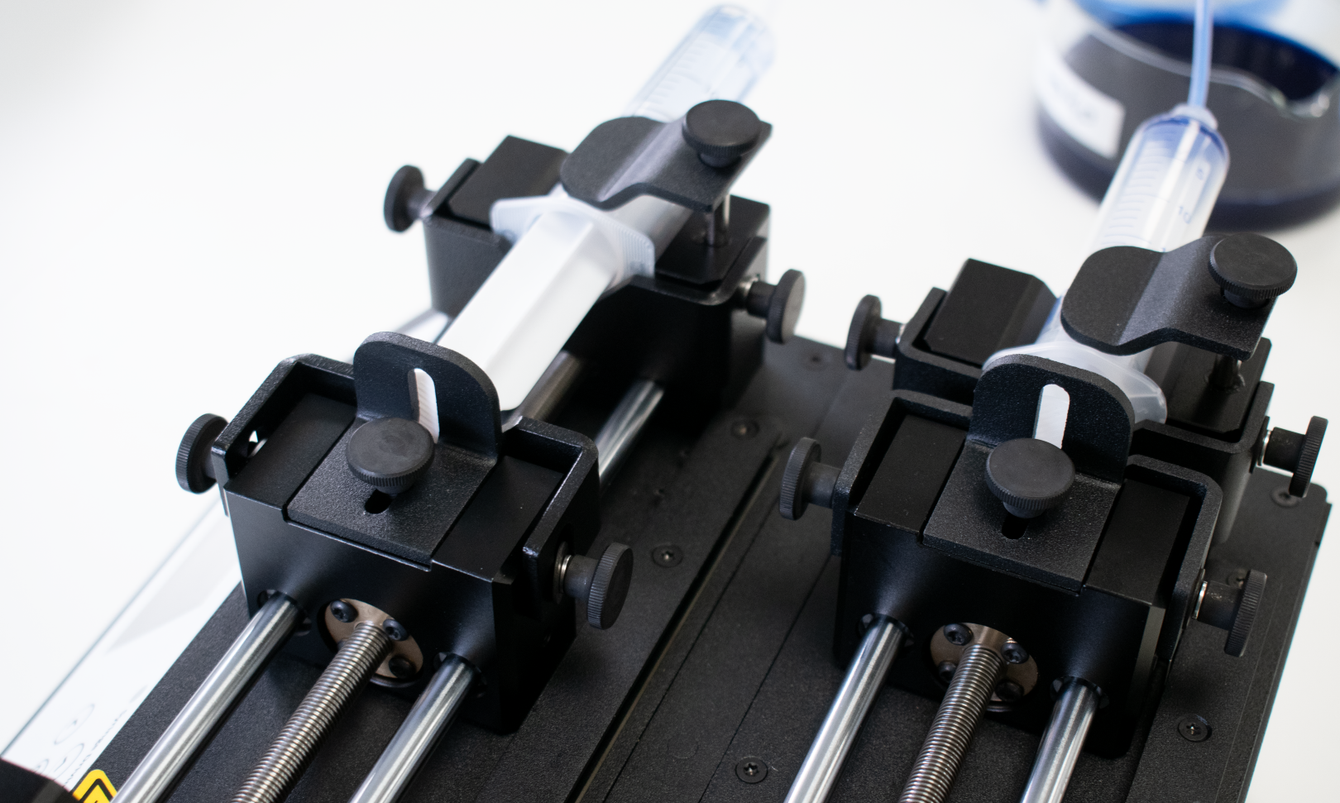Syringe Pump

A syringe pump, or syringe driver, is a motorized device that accurately controls the movement of fluid from a syringe by mechanically inserting or retracting the plunger. Stepper motors accurately move the platform attached to the plunger of the syringe while the body of the syringe is held steady so that the only movement is from the action of the motor.
Basic models can be used for the infusion (and sometimes withdrawal) of liquids at a set rate and are controlled simply by changing the speed of the motor. More sophisticated syringe pumps are equipped with onboard computers, which allow you to program the motion of the stepper motor with multiple steps.
Types of Syringe Pump
There are two main types of syringe pump: laboratory syringe pumps and medical syringe pumps.
Medical Syringe Pumps
Medical syringe pumps are a type of infusion pump that use a syringe rather than an intravenous bag. You can use these to administer medication and other fluids in vivo diagnosis, treatment, or other patient care. Medical infusion pumps often come with drug specific pre-sets and pre-programmed hard and soft limits designed to ensure the safety of the patient. Although they are relatively simple devices, as patient safety is a concern, medical professionals must be trained in their use. The main advantage of a medical syringe pump over the manual use of a syringe is that they can administer medication at a steady rate over a long period of time.
Laboratory Syringe Pumps
Laboratory syringe pumps (also referred to as scientific syringe pumps or research syringe pumps) can move small volumes of liquid with great precision. Some can be programmed to perform complex routines, while others can be controlled using a computer and can also be integrated with other pieces of equipment. They are designed to be versatile and adaptable so you can use them for a wide range of applications covering many fields, including thin film fabrication, mass spectrometry, flow chemistry, microfluidics, and more.

Displacement vs. Pressure-Based Syringe Pumps
Laboratory syringe pumps can also come in two primary types, displacement (volumetric) and pressure-based. These have different control mechanisms and therefore have different ideal applications.
| Displacement (Volumetric) Syringe Pump | Pressure Based Syringe Pump | |
| Other names | Volumetric pumps | Constant pressure pumps |
|---|---|---|
| Flow Rate Control | Controls the linear motion of the syringe plunger to deliver precise volumes of fluid | Regulates the pressure applied to the syringe plunger to control the flow rate |
| Often used for | Reagent addition, sample injection, or continuous infusion | Dispensing viscous fluids, high-pressure requirements, or situations where the system's backpressure may vary. |
| Cost | Affordable | Expensive |
| Use in difficult situations | Less Versatile and Durable, easy to use and maintain | Very versatile and Durable, harder to use and maintain |
Single vs. Dual Syringe Pumps
As the name suggests, a single syringe pump will give you control over one syringe. Dual syringe pumps allow you to control either one or two syringes depending on the mode of operation. Some syringe pumps let you use each pump (whether on a single or dual pump model) to provide a pulsed flow or to continuously infuse or withdraw a liquid.

While dual syringe pumps do cost more than single pump models, they offer you lots more options for use. For example, having two syringes allows you to precisely mix two different solutions, as shown below. Doing this will give you accurate control over the chemical reactions occurring. You could use it for processes such as microfluidics or to produce emulsions of two immiscible solutions.

When combined with other equipment such as check valves and solvent reservoirs, dual syringe pumps can be used for the continuous pumping of a single solution. Syringe pumps like the Ossila Dual Syringe Pump allow each pump to be controlled independently of the other. This means that they can be used as a single syringe pump if required or, one pump can be set to infuse while the other is in withdrawal mode. In many ways, a good dual syringe pump is like having two single syringe pumps in a single unit.
Examples of Syringe Pump Applications
Syringe pumps provide precise, pulse-free delivery, ideal for handling micro- to nano-litre flows. They support advanced programmed flow protocols, such as stepped infusions, ramps, and triggered events, and can withdraw fluid for sampling. Syringe pumps are widely used in chemistry for controlled reagent addition, mixing, and stoichiometric control in continuous flow reactions. In neuroscience, they allow accurate micro dose delivery to specific brain regions, while in biomedical engineering and cell biology they deliver nutrients and reagents in tissue culture systems. They also enable stable flow in protein purification, chromatography, and analytical techniques like HPLC and LC-MS. In environmental and materials science, syringe pumps ensure reproducible sample handling and deposition for nanomaterials, thin films, and coatings. Additionally, they are used in experiments requiring precise control of flow and pressure, such as microfluidics, optical trapping, and soft matter studies, where consistent fluid dynamics are essential for reproducibility and measurement accuracy.
Syringe Pump
